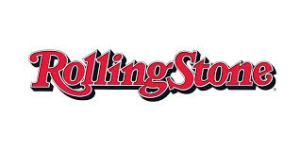 Can you get a sense of place from listening to a song? In an article in the Financial Times (FT), entitled “The Life of a Song – Georgia On My Mind”, Mike Hobart wrote that when you “combine Stuart Gorrell’s lyrics with Hoagy Carmichael’s music… the sense of place becomes palpable.” While that may be true, the piece attributed to Frank Trumbauer who said, “Nobody ever lost money writing songs about the South”. The song did not become the well-known standard it is today until Ray Charles recorded it in 1960, some 30 years after Carmichael wrote it. Hobart believes that the song works so well “not the least because ‘Georgia On My Mind’ is a brilliant piece of imaginative fiction that captures the yearnings of a homesick soul. That fact and fantasy are so out of step only adds to the pathos.”
Can you get a sense of place from listening to a song? In an article in the Financial Times (FT), entitled “The Life of a Song – Georgia On My Mind”, Mike Hobart wrote that when you “combine Stuart Gorrell’s lyrics with Hoagy Carmichael’s music… the sense of place becomes palpable.” While that may be true, the piece attributed to Frank Trumbauer who said, “Nobody ever lost money writing songs about the South”. The song did not become the well-known standard it is today until Ray Charles recorded it in 1960, some 30 years after Carmichael wrote it. Hobart believes that the song works so well “not the least because ‘Georgia On My Mind’ is a brilliant piece of imaginative fiction that captures the yearnings of a homesick soul. That fact and fantasy are so out of step only adds to the pathos.”
That ultimate line from Hobart’s piece struck me around an issue that I have thought about for some time. How many Chief Compliance Officers (CCOs) and compliance practitioners out there have faced the following question from the General Counsel (GC), Chief Executive Officer (CEO), Chief Financial Officer (CFO) What does it do to enhance shareholder value? This is the question that is posed when senior management wants to deny resources to or even cut back the compliance function. At best the question is disingenuous and at worst it is simply a dodge by someone wanting to denude a corporate compliance function for their own nefarious reasons.
Michael Skapinker raised this second point, in another FT article entitled “Shareholder value is a cover for over-mighty chief executives”. Skapinker further opines that this question also presages an inquiry into whether CCOs “are using the cover of shareholder primacy to put themselves first?” While he also condemned the disparity in the growth of senior executives salaries and true shareholder value, Skapinker worries about the lack of accountability of CCOs and how their actions can damage a company’s reputation.
So how do you respond to this query? I think there is an answer with which you can always respond when faced with a clearly hostile CEO or other senior manager. It is the following. A best practices anti-corruption compliance program, whether based on the Foreign Corrupt Practices Act (FCPA), UK Bribery Act or other anti-bribery law always enhances shareholder value. The reason is quite simple. It is all about tightening up the internal controls to prevent bribery and corruption.
However the part that such CEOs or other senior management may not understand is that FCPA internal controls are largely financial controls. Such controls are in place not only to comply with laws but also to provide internal oversight on how money flows out from an organization. The better the internal financial controls the better run a company will be in both the short and long term.
Most readers are familiar with Ethisphere’s annual designation of the World’s Most Ethical Companies. Many commentators deride this list because many of the companies on the list have gone through a FCPA investigation or enforcement action. Even with that factor, one of the things that Ethisphere touts about this list is that the companies on it routinely outperform the Standard & Poor’s (S&P) Index in annual performance. I thought about this seeming anomaly for a long time, wondering how ethical companies could be in the midst of FCPA investigations and be on a most ethical list.
The reason these companies are on the list is that they have better financial controls and by having better financial controls, these companies are more generally better run. Think about financial controls around employee expense reimbursement as an example. These are in place to satisfy Internal Revenue Service (IRS) rules to demonstrate the business purpose of employee travel, entertainment of customers, hospitality for potential customers and similar business expenses. Now consider this IRS requirement overlaid with a FCPA compliance requirement. Not only do you need to record the foreign government officials (or not) that you entertain, you need to document the expense incurred and the business purpose. If the expenses were predetermined to be over the amount set in your compliance policy, you may require compliance department pre-approval. When an employee submits an expense reimbursement form, there is usually a signature or self-attestation required. Then the employee’s supervisor, and perhaps one level above, must approve the reimbursement request before it even gets to Accounts Payable (AP) for a financial and procedure focused review.
All of these steps are financial controls yet they operate as internal compliance controls as well. If the controls are enforced the compliance function would have a searchable database to test employee expense reimbursement requests to see if any anomalies appear which should be set aside for further investigation. Imagine how GlaxoSmithKline PLC (GSK) might have fared if it had properly assessed its Chinese employee reimbursement requests to determine if the employees had actually put on the events for which they claimed reimbursement.
The same financial control analogy is true for the other key steps in any best practices compliance program. Management must communicate the message regarding doing business in compliance down to the troops. This message should be formalized in policies and procedures to set expectations of behavior. Then there should training on these educations and a person or function sufficiently resourced to run it. Next there should be incentives to do business in compliance and sanctions for those who fail to meet the set expectations and an appropriate reporting mechanism for internal reporting of compliance violations. Any best practices FCPA compliance program would also have a risk assessment, management of third parties and a mergers and acquisition (M&A) component. Finally, all of these concepts should be memorialized through internal controls that are designed, implemented and tested for effectiveness.
So the next time one of those senior management types asks you what the compliance function does or even what an expenditure that you want to incur will do to increase shareholder value, you can not only point him (or her) to the Ethisphere Most Ethical Company list but you can dive down to the specific level of your company and point directly to one of the above concepts around internal controls, which are really financial controls, to make your company not only run more efficiently but also provide appropriate levels of oversight.
So just as Hoagy Carmichael may indeed have written Georgia On My Mind because no one “ever lost money writing songs about the South”; no company was worse run because it had effective internal controls. Quite the contrary, the more effective your compliance controls are the better run your company will be and that will most certainly enhance shareholder value.
This publication contains general information only and is based on the experiences and research of the author. The author is not, by means of this publication, rendering business, legal advice, or other professional advice or services. This publication is not a substitute for such legal advice or services, nor should it be used as a basis for any decision or action that may affect your business. Before making any decision or taking any action that may affect your business, you should consult a qualified legal advisor. The author, his affiliates, and related entities shall not be responsible for any loss sustained by any person or entity that relies on this publication. The Author gives his permission to link, post, distribute, or reference this article for any lawful purpose, provided attribution is made to the author. The author can be reached at tfox@tfoxlaw.com.
© Thomas R. Fox, 2015










